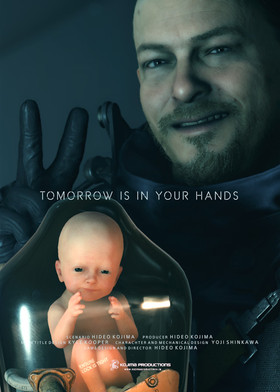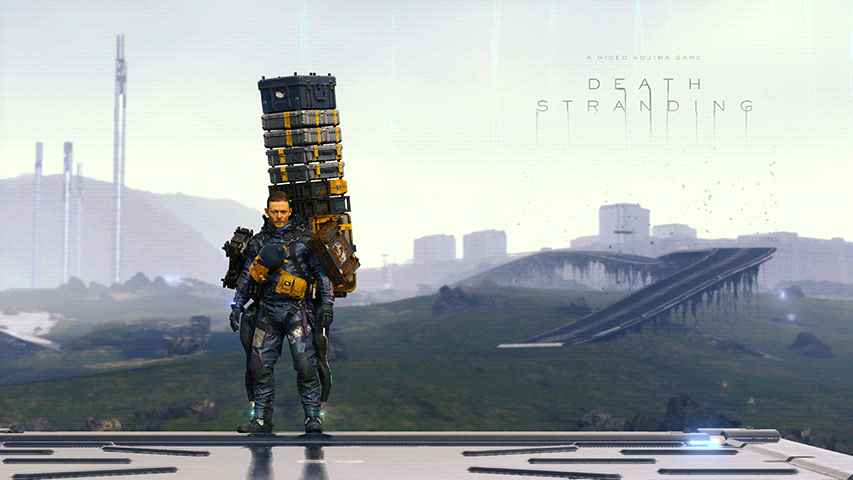- Mik Bromley

- Apr 1, 2020
- 4 min read
Updated: Apr 2, 2020

Title: Death Stranding | Developer: Kojima Productions | Publisher: Sony Interactive Entertainment, 505 Games | Initial Release: 8th November 2019
After my previous post, which looked at the ways in which Death Stranding and virtual photography could be deeply matched with one another, we've not had to wait long to find out exactly how. Delivering on their promise to bring a photo mode to PS4 before the end of March, Kojima Productions dropped the version 1.12 update yesterday to do just that. The update overview immediately reveals some very welcome words right from the start; not only do we see that the touchpad has been utilised for quick photo mode access but it's great to read that "free camera movement has been prioritised" as well. Two common failings overcome then, but let's take a quick look at what else the new Death Stranding photo mode has in store.

Key Photo Mode Features:
Free camera with generous bounding area
Huge lens zoom range with manual & auto focus
Extensive range of character pose options
Quick Look:
As a game built upon both Guerrilla Games' Decima Engine and Hideo Kojima's often unique creative vision, Death Stranding is as beautiful as it is intriguing but is also a game with some exceptional attention to detail that seeks to exceed the standards set game mechanics and character fidelity alike. Much like the game itself then, the photo mode uses the acclaimed feature set of Horizon Zero Dawn as a starting point and manages to ramp things up in a number of key areas, taking the normal to another, more intricate level.

outrageous focal length range of 10 - 1000 mm, complimented by manual or auto focus
A straightforward and mostly unobtrusive tabbed UI is as familiar as it is functional while the main compositional camera controls are bound to logical controller buttons, all meaning that this is a photo mode that will be immediately easy to pick up for most virtual photographers. One curious control design though, is the restriction of forwards camera movement past protagonist Sam. Behaving as though he is a starting / zero point from which you can only move away, you'll need to "reverse" and orbit the camera to take advantage of the generous bounding sphere and put any distance between you and your character. The as-promised free camera is there and is not actually difficult to use, it's just a slightly unconventional way of moving.
Much more conventional is the welcome use of real-world camera terminology and broad range of available options. A frankly outrageous focal length range of 10 - 1000 mm is complimented by manual or auto focus as well as manual aperture settings to allow strong Depth of Field control in super-wide or ultra-narrow Fields of View. Highly effective exposure compensation and contrast sliders also work well with the adjustable noise and range of 14 colour filters while the 15 available frames range from simple crops and cut-outs to a cool mock-poster design.
a very adaptable tool set for character portrait photography
Particularly well thought out are the highly flexible logo placement and character posing options which really reflect the affinity for detail that permeates so many elements of the game. Way beyond the typical logo in the corner approach, Death Stranding's stylised branding can be applied in any one of 441 positions, rotated through 360° and switched between 24 colour options to best match the style of the underlying image, but it is the posing of both Sam and his infant companion, BB, that has to be the most impressive feature of this photo mode.
Not content with a few preset body positions, although there are 66 to choose from between both Sam and BB, you will also find manual body tilt and torso twist settings for outstanding posture control. Add in 18 facial expressions for each, along with separate eyeline manipulation and you have a very adaptable tool set for character portrait photography. Of course, lighting is the other big factor in portrait work and, with no time of day control or manual spot lights to speak of, there is an added importance on making clever use of the available light sources in the game but that should all be part of the fun.

hyper-realistic environments that were previously beckoning to be photographed now can be
This high level of character-oriented customisation should not really come as a surprise. I believe that Death Stranding is a game that desperately wants its players to make connections, both literally in the game's story and philosophically beyond it, and what better way to do that than by getting closer to the main characters. That is not to say that this is a portrait-limited photo mode however. On the contrary, the hyper-realistic environments that were previously beckoning to be photographed now can be with much greater freedom and the near-future sci-fi and horror elements add some rather distinctive subject opportunities that I look forward to exploring further.
On first impressions then, the long-awaited Death Stranding photo mode has taken one of the previous benchmark standards and improved upon it significantly. With some of the most robust photo mode tools on console and an inspiring, enigmatic context, I am certainly happy to follow the poetic vision and while the world away. Expect a lot of great photography to come out of this.
As always, I'll be back soon with an in depth photo mode review and more on the photographic opportunity after spending some more time with the game. Thanks for reading and drop your thoughts on the new photo mode in the comments below, Mik




















Kaiser OTC benefits provide members with discounts on over-the-counter medications, vitamins, and health essentials, promoting better health management and cost-effective wellness solutions.
Obituaries near me help you find recent death notices, providing information about funeral services, memorials, and tributes for loved ones in your area.
is traveluro legit? Many users have had mixed experiences with the platform, so it's important to read reviews and verify deals before booking.